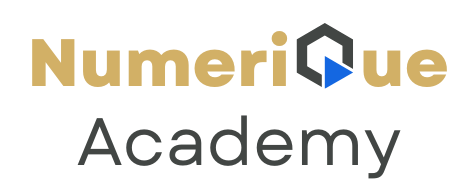If you are all set to start your business, we know it’s an exciting venture. However, if you dive headfirst without testing your idea, it can result in the wastage of time, money, and energy. This is where the validation of the idea comes in. It’s the process of confirming that people actually want what you’re planning to sell, before you invest months or years building it.
Here’s a step-by-step guide to help you validate your business idea effectively.
1. Start with Problem-Solution Fit
Before thinking about your product, get super clear on the problem you’re solving.
- Ask yourself: Is this a problem people really care about?
- Talk to real people. Get out of your own head and listen to your target audience.
Pro tip: Don’t ask “Would you buy this?” Ask “What are you currently doing to solve this problem?” That reveals actual behavior, not hypothetical interest.
2. Define Your Target Audience
Who is this for? Be specific.
Instead of “women aged 18-40,” think:
- “New moms in urban areas looking for flexible work-from-home opportunities.”
- “Freelancers who struggle to manage multiple client payments.”
The more focused your audience, the easier it is to validate your idea.
3. Create a Minimum Viable Product (MVP)
An MVP is a simplified version of your product that solves the core problem.
Examples:
- A Google Form instead of a custom app.
- A landing page with mockups and pricing.
- A basic service you deliver manually before automating.
The goal? Test the idea with minimal time and money.
4. Use a Landing Page to Gauge Interest
Create a one-page site that explains:
- What the product/service is
- Who it’s for
- What it does
- A call-to-action (like “Join the waitlist” or “Pre-order now”)
Drive traffic to it via social media, email, or even ads. Measure:
- How many people visit
- How many sign up
- Feedback from those who don’t convert
Bonus tool: Use Hotjar or Microsoft Clarity to watch how people interact with your page.
5. Get Pre-Sales or Commitments
One of the strongest validations is when people pay before the product is ready.
Ways to do this:
- Offer an early-bird discount.
- Launch a Kickstarter or crowdfunding campaign.
- Set up a pre-order option with tools like Gumroad or Shopify.
Even a few sales prove real demand.
6. Run Small, Cheap Ad Campaigns
Spend a little ($20–$100) on platforms like:
- Facebook or Instagram Ads
- Google Search Ads
- TikTok Ads (for younger audiences)
Track clicks, conversions, and cost-per-lead. If people are clicking through and signing up, you’re on to something.
7. Conduct 1:1 Customer Interviews
If you’re in a niche where direct feedback is essential (like SaaS, coaching, or B2B), talk directly to potential users.
Ask:
- What are your biggest challenges with [problem]?
- What tools or services are you using now?
- Would a solution like [your idea] be valuable to you?
This gives you qualitative insights you won’t get from landing pages or ads.
8. Use Communities to Get Feedback
Reddit, Facebook Groups, Slack communities, Discord servers, and Quora are goldmines.
Post your idea (in a non-spammy way), ask for feedback, and watch reactions. If your idea gets people excited, that’s a great sign. If it flops—good! You saved yourself a headache.
9. Track Metrics That Matter
Don’t get distracted by vanity metrics like likes or page views. Focus on:
- Email sign-ups
- Pre-orders or purchases
- Waitlist growth
- Cost-per-lead
- Conversion rates
These will help you make an informed “go or no-go” decision.
10. Be Ready to Pivot or Kill It
Validation isn’t always about proving your idea will work—it’s also about finding out if it won’t.
If there’s no traction after real effort, consider:
- Tweaking your offer
- Repositioning the product
- Changing the audience
- Or scrapping it and moving on (that’s a win, too)
Final Thoughts
Validating your business idea saves you from pouring your soul into something no one wants. The best part? You can usually get a clear answer in 2–4 weeks—not months.
Build small, learn fast, and let real data guide your path.

